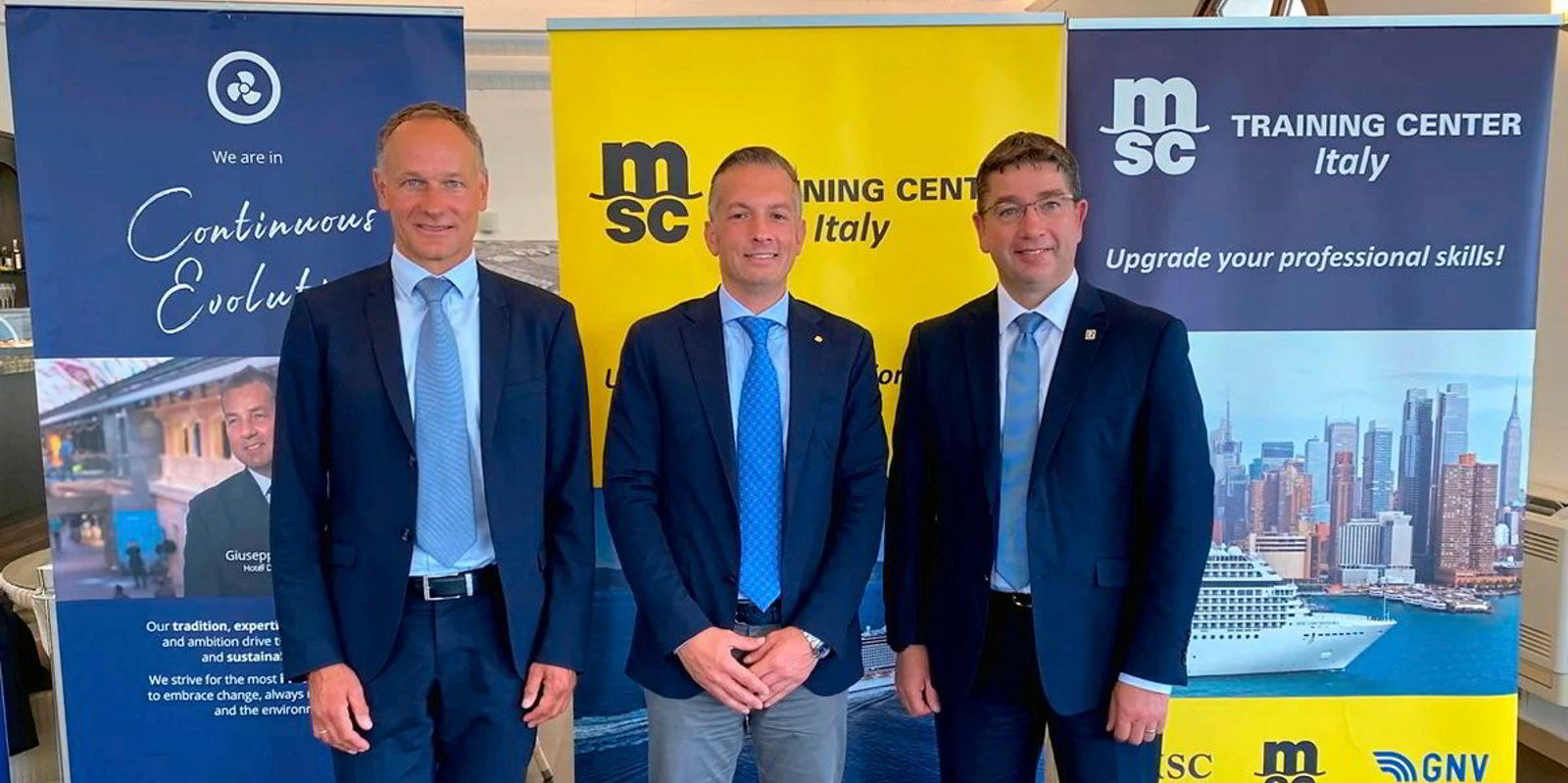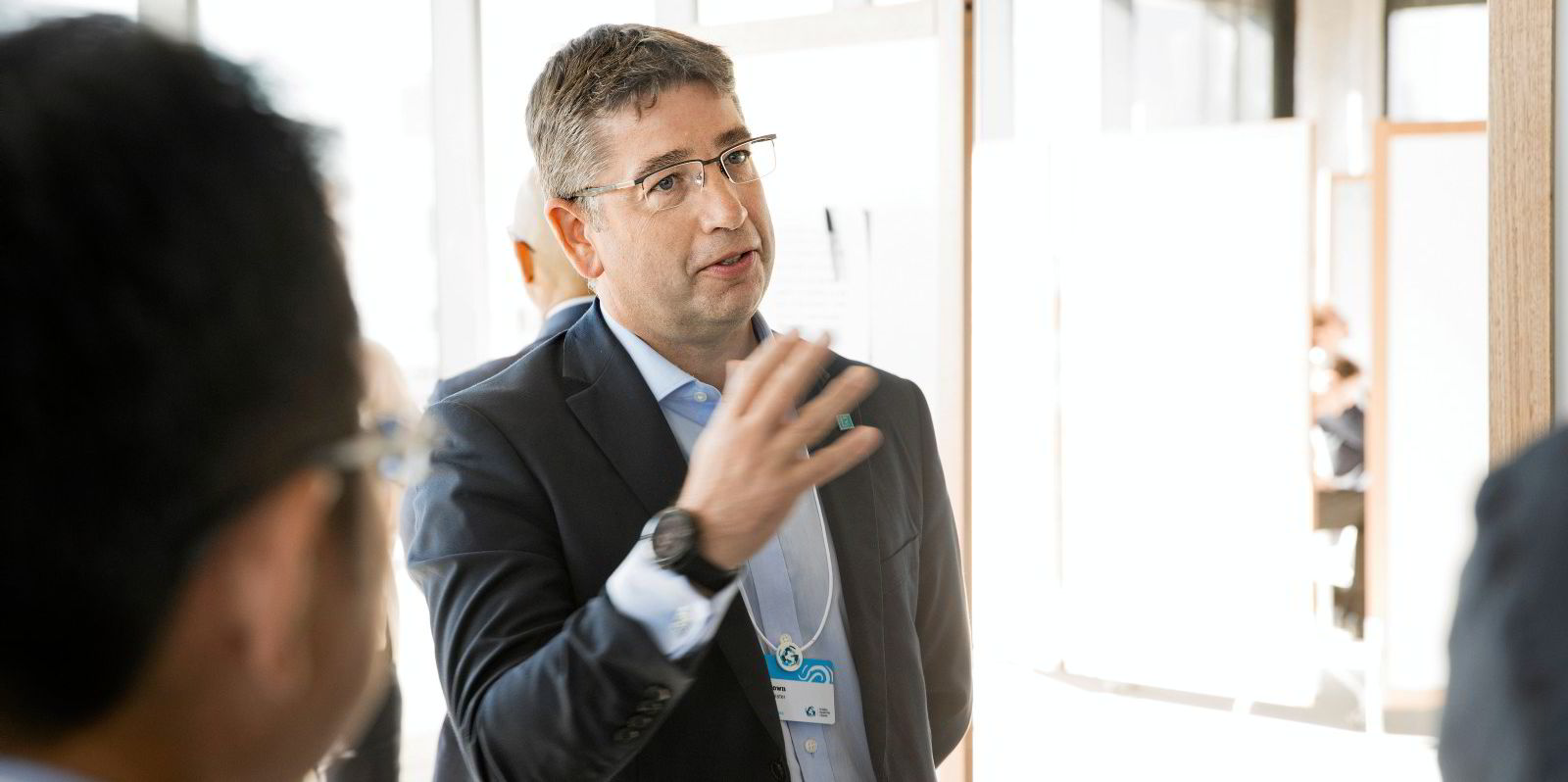Ammonia could be the dominant fuel for the container liner sector if proven safe, Lloyd’s Register chief executive Nick Brown told TradeWinds’ Green Seas podcast.
Brown, whose classification society is working on several collaborations aiming to bring ammonia to shipping, said container shipping could be a rapid adopter, which he said has sufficient energy density to be viable as a long-haul shipping fuel and has no carbon in its molecule, NH3.
But he said it is too early in the process to ensure safety risks are overcome to make a conclusion that ammonia will catch on in the sector.
His comments came after the announcement of a partnership involving Lloyd’s Register, the Shanghai Merchant Ship Design & Research Institute (SDARI) and engine manufacturer MAN Energy Solutions to work with liner giant MSC Mediterranean Shipping Company to develop a design for an ammonia-fuelled container vessel.
“I do think it could become the dominant fuel, especially for vessels that are going on fixed routes with known port calls in advance, and it’s easier for, therefore, long-term fuel supply agreements to be put in place in key strategic locations,” Brown said in the podcast interview.
Manufacturers like MAN are working toward having ammonia-fuelled engines available as early as next year, with the first vessels predicted to hit the water in 2026.
But safety concerns are high on the mind of shipping stakeholders and observers, as ammonia’s toxicity could pose risks to vessel crews and the marine environment.
Madeline Rose, climate campaign director at green group Pacific Environment, said members of the Ship It Zero campaign have concerns about ammonia, in large part because of those risks. The campaign, in which her group is a leading participant, is aiming to persuade retail brands to commit to zero-emission shipping by 2030.
“We are concerned that there are just unknowns about the impacts of ammonia spills on marine wildlife and on marine ecosystems,” she told the podcast.
Ocean harms
After all, Rose said, ocean life is already suffering from climate change, ship strikes and other harms from industry.
She also pointed to the fact that ammonia would not be a zero-emissions fuel, since burning the commodity leads to other types of air pollution, particularly nitrogen compounds.

“Our hope is that the clean energy transition encourages, brings out the best in our society, and says, ‘Let’s actually leverage this transformative moment in the human experience to create true zero solutions that are safe and healthy and win-win-wins,” she said.
“An ammonia outcome for container shipping doesn’t really feel like a real transformative solution.”
Brown, though he expressed bullishness on the prospects of ammonia, did not minimise the safety concerns.
“There are real safety concerns, clearly. They’re understood — toxicity being the number one concern, and the safety for the crew but also the safety for port inhabitants should anything go wrong during an ammonia bunkering activity,” he said.
He said the work with MSC will explore whether ammonia is suited to the arrangement that is traditionally found on ships, with engines and key equipment all in the engine room, or whether another setup is better.
What could work for ammonia-fuelled ships may be an arrangement in which engines and other ammonia equipment are located in a space that uses a high degree of automation and that is distant from most crew activity.
‘Crucial fuel
In announcing the MSC effort, Brown said he believes ammonia is crucial to achieving decarbonisation targets for shipping.
He said that is because while methanol and LNG both can be produced in a green way, they still have a “C” in their molecule and still will eventually require carbon capture to achieve net-zero emissions. Brown does believe onboard carbon capture will become a viable technology in shipping.

“But we also know that for every tonne of fuel oil that we use today, we will create three tonnes of CO2,” he said. “So particularly for container ships, that creates a huge challenge in terms of storage space on board.”
Plus, he said container terminals are in busy city ports, so landside CO2 reception infrastructure may be less suited for the container trades.

He said ammonia has a fuel availability advantage. Methanol has become the leading alternative fuel in recent container ship orders, but it takes green hydrogen produced from renewable electricity to make green e-methanol, and that’s also the case for ammonia.
“Our view is that it will be much much cheaper to produce green ammonia than it will be to produce green methanol from a green hydrogen,” he said.
Read more
- Podcast: Container shipping follows the leaders on a variety of alternative fuel pathways
- Editor’s selection: Death of a shipping titan, a shadow fleet shift and millennial shipbroking
- Green Seas: Can the e-fuel ‘opportunity’ push the IMO to act on a carbon levy?
- New aviation-shipping coalition to push for green hydrogen priority
- Trafigura says carbon price could unlock ‘abundant’ green fuels in Global South



